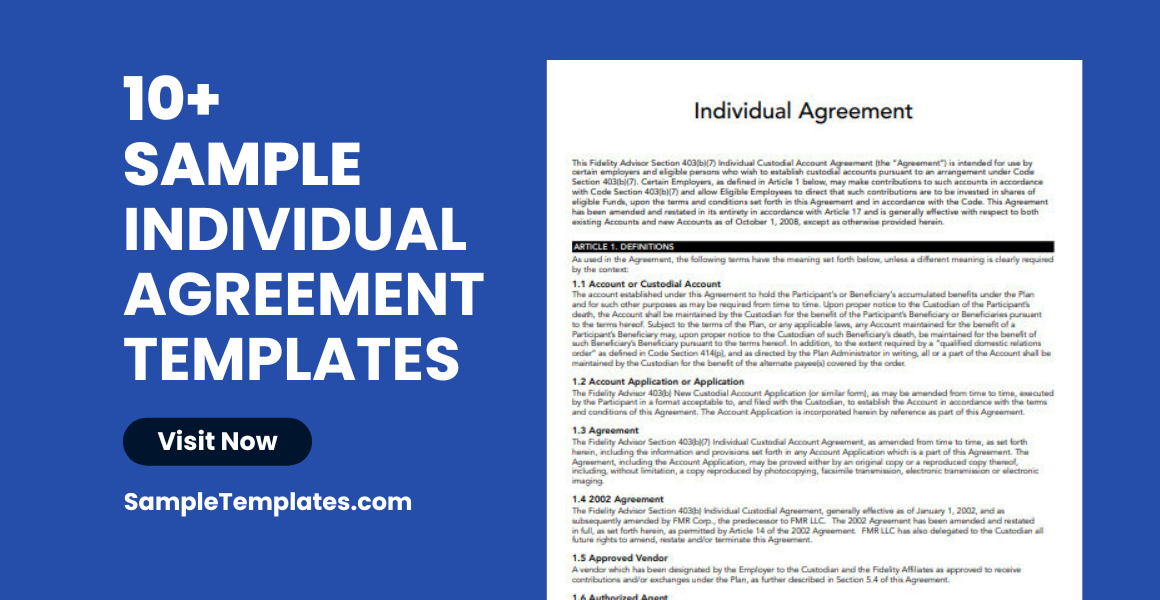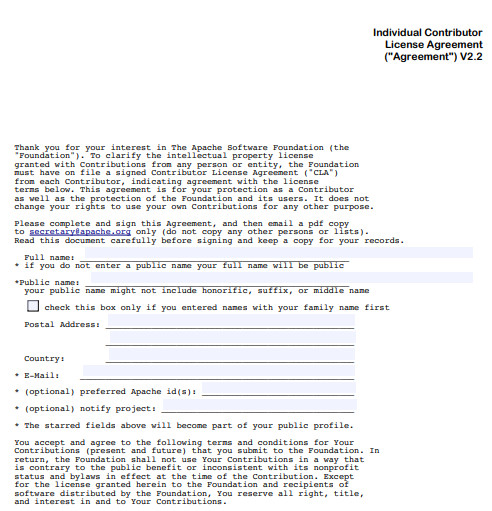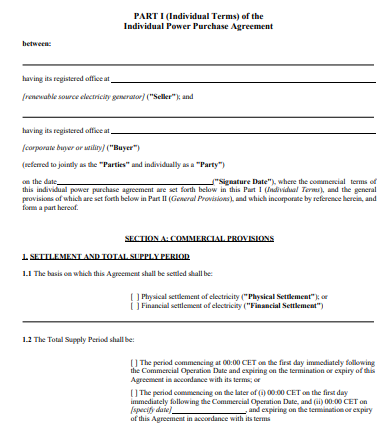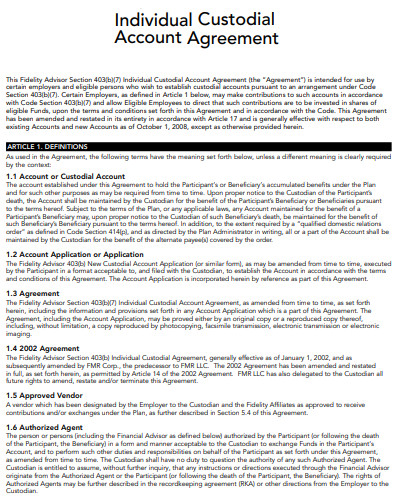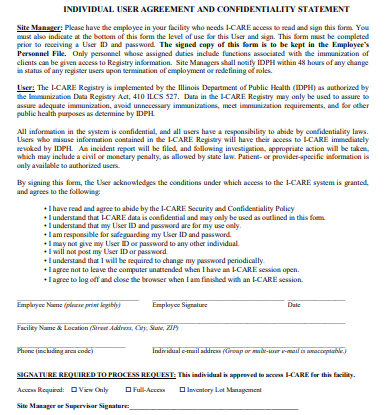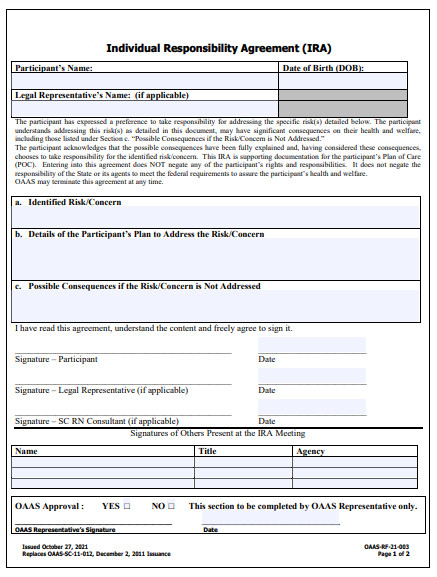FREE 10+ Individual Agreement Samples
1. Sample Individual Agreement Template
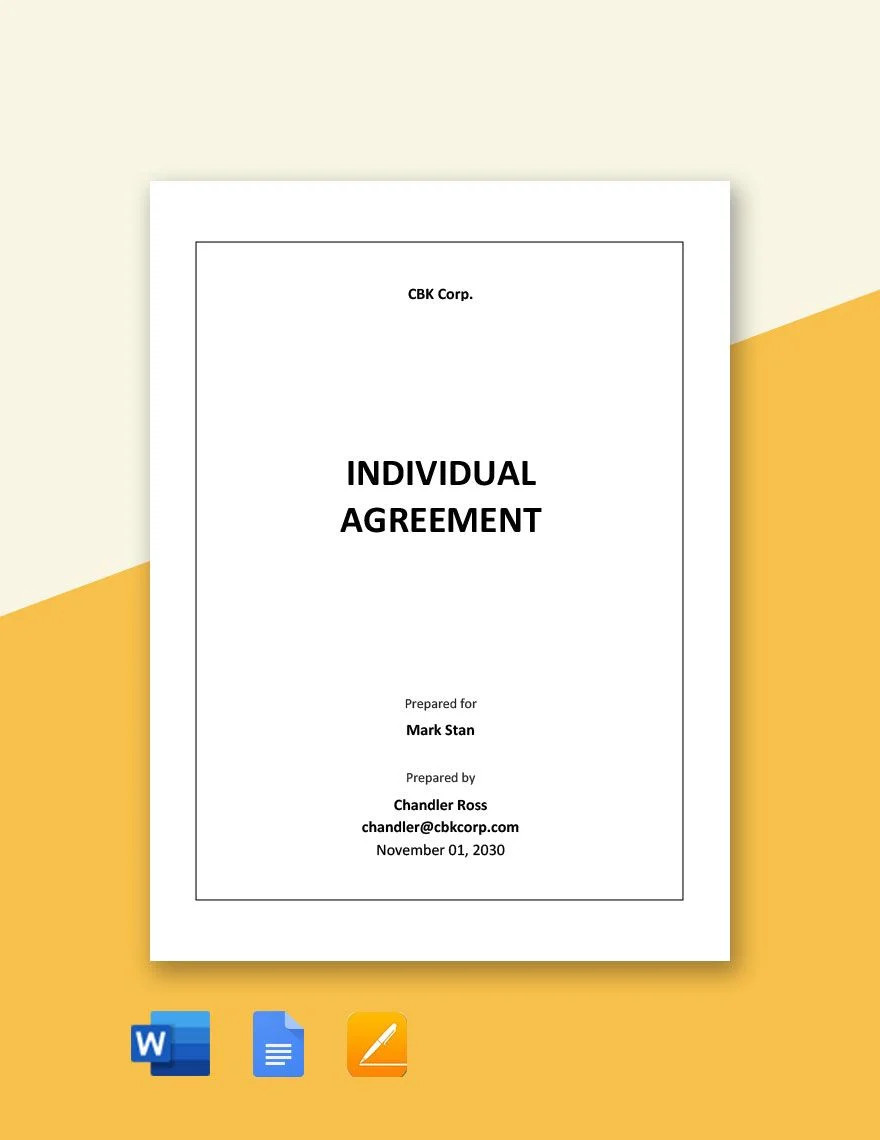
2. Sample Individual Employment Agreement Template
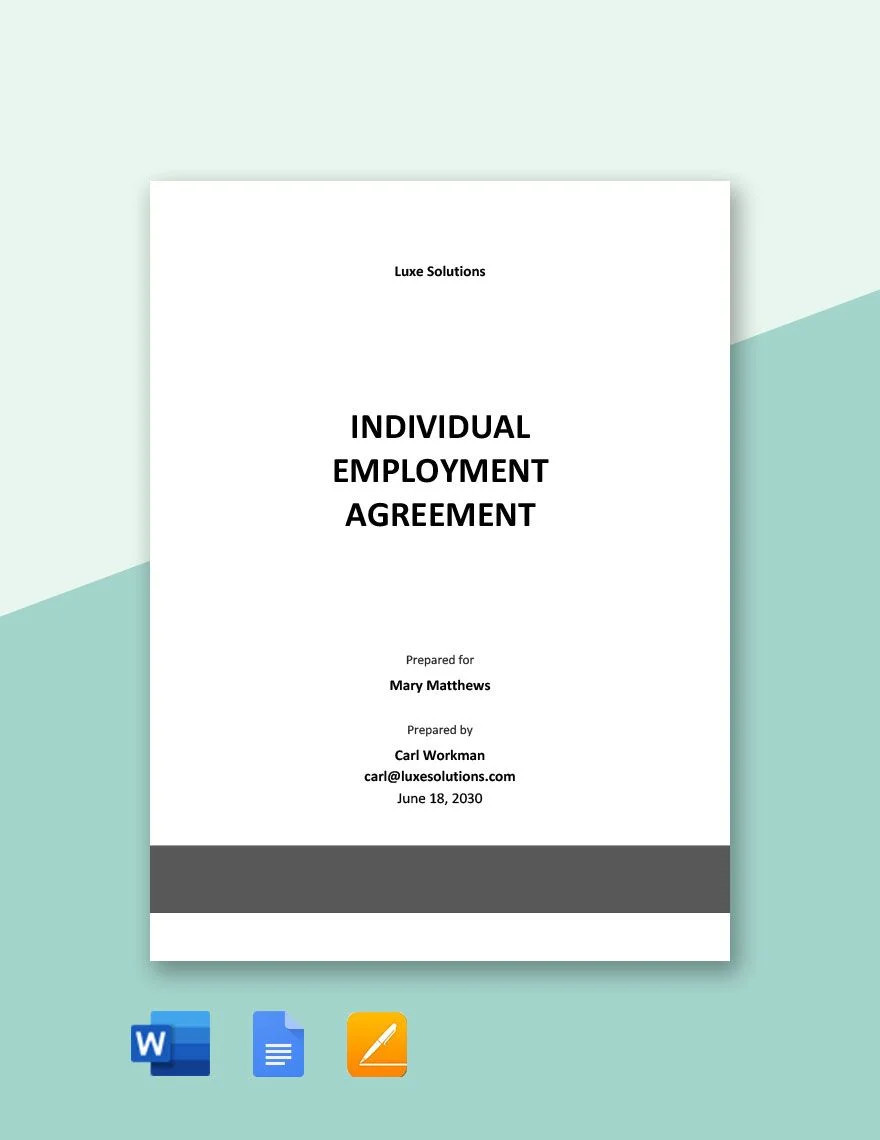
3. Sample Individual Loan Agreement Template
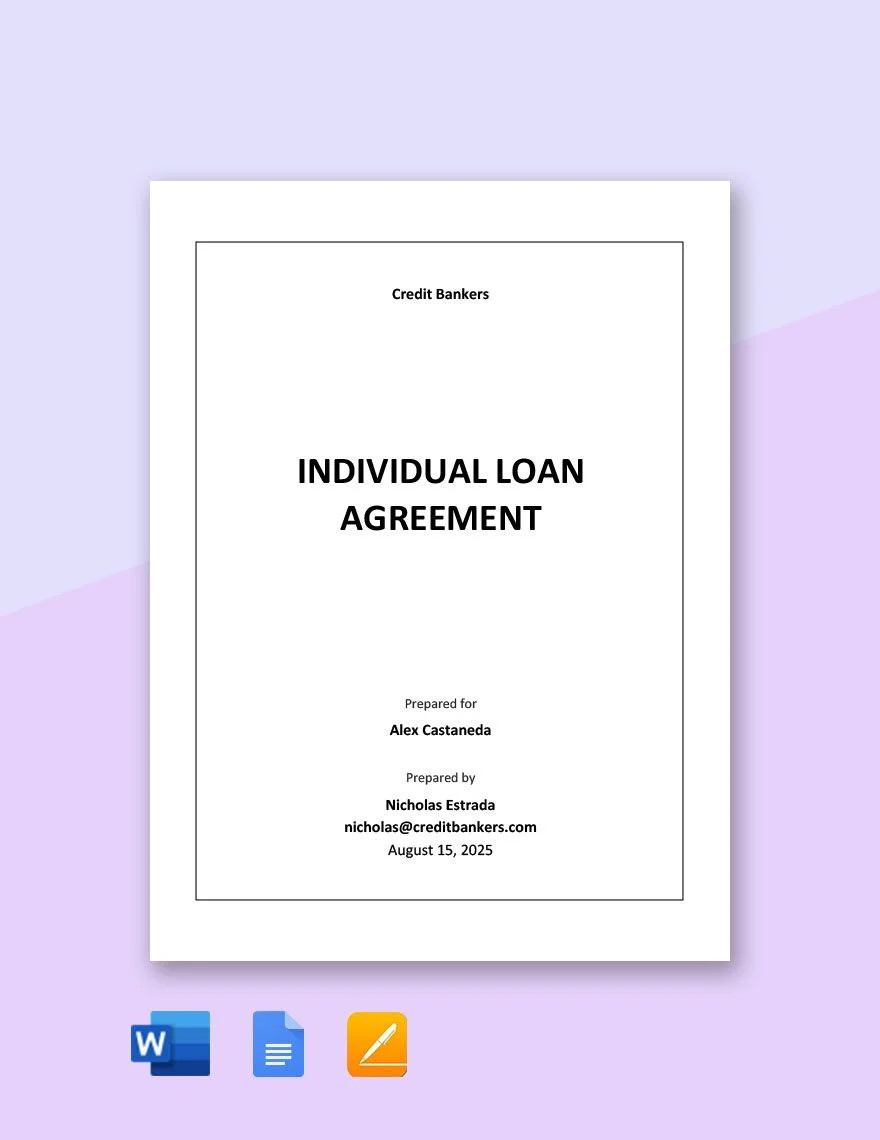
4. Sample Individual Non Disclosure Agreement Template
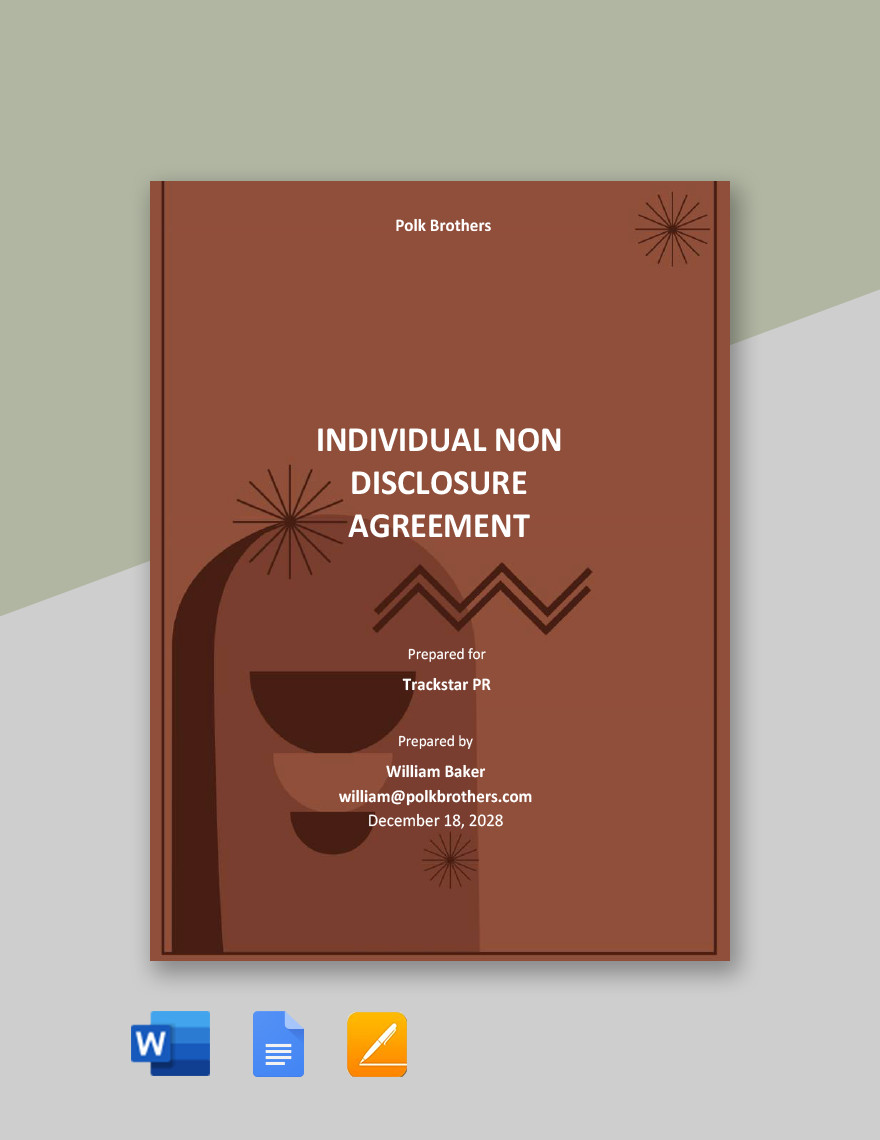
5. Sample Individual Flexible Working Agreement Template
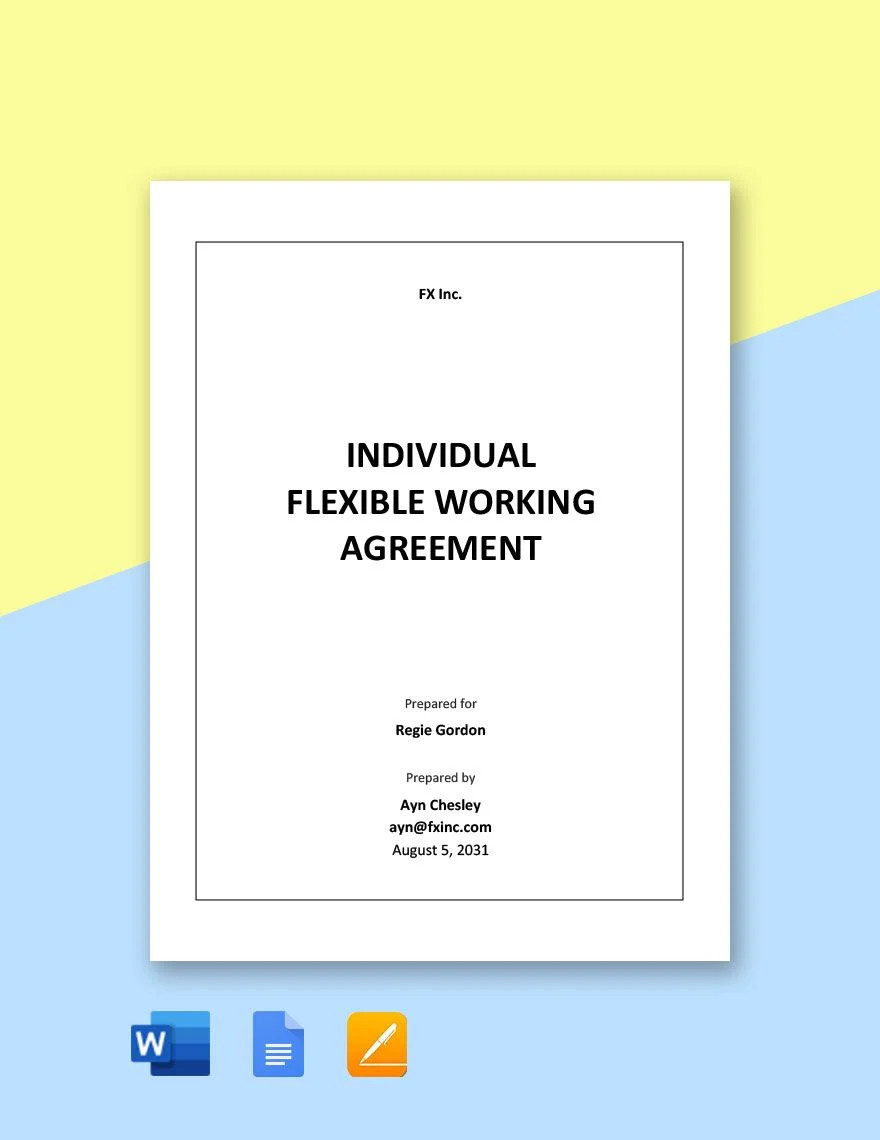
What is Individual Agreement?
Understanding Individual Agreements
An individual agreement is a legally binding contract between two parties, typically an employer and an employee. It outlines the terms and conditions of employment, including salary, work hours, duties, and other essential aspects. These agreements are tailored to the specific needs and circumstances of the parties involved, differing from collective bargaining agreements which cover groups of employees.
Essence and Purpose
The essence of an individual agreement lies in its ability to provide clarity and security for both parties. It serves as a sample roadmap for the professional relationship, detailing what is expected from each party. The purpose is to ensure that both the employer and the employee have a clear understanding of their rights and responsibilities, reducing potential conflicts and misunderstandings.
Components of an Individual Agreement
- Identification of Parties: Clearly states the names and details of the employer and employee.
- Job Description: Outlines the role, responsibilities, and expectations.
- Compensation and Benefits: Details salary, bonuses, benefits, and other forms of compensation.
- Work Hours and Leave: Specifies working hours, overtime policies, and leave entitlements.
- Confidentiality Clause: Obligates the employee to maintain confidentiality.
- Termination Conditions: Defines the circumstances under which the sample agreement can be terminated.
Elements to Consider
- Legality: The agreement must comply with labor laws and regulations.
- Mutual Consent: Both parties should agree to the terms without coercion.
- Fairness and Equity: Terms should be fair and not exploit any party.
Importance of Individual Agreements
Legal Framework and Compliance
Individual agreements provide a legal framework that governs the employment relationship. They ensure both parties are aware of and comply with employment laws and regulations, reducing the risk of legal disputes.
Clarity and Certainty
These agreements bring clarity and certainty to the employment relationship. By clearly outlining the terms and conditions of employment, they help prevent misunderstandings and miscommunications between the employer and employee. You can also see more templates like Individual Employment Agreement samples.
Flexibility and Adaptability
Individual agreements allow for flexibility and adaptability to the specific needs of the employer and employee. This is particularly important in industries where standard contracts may not adequately address unique job roles or working conditions.
Protection of Rights
Both employers and employees benefit from the protection of their rights through individual agreements. Employees are assured of their entitlements and obligations, while employers can safeguard their business interests and intellectual property.
Conflict Resolution
In the event of a dispute, an individual agreement serves as a crucial reference point. It provides a clear basis for resolving conflicts, often without the need for external mediation or legal intervention.
Tailored Employment Conditions
Individual agreements enable the tailoring of employment conditions to suit the specific requirements of the job and the preferences of the employee. This can include flexible working arrangements, bespoke compensation packages, and specific job responsibilities.
Enhancing Employee Engagement
When employees have a say in the terms of their employment and feel that their individual needs are considered, it can lead to higher levels of engagement and job satisfaction. You can also see more templates like Independent Agreement Samples.
Setting Performance Expectations
These agreements can be used to set clear performance expectations and goals, which can be beneficial for employee development and business outcomes.
Benefits of Individual Agreements
Tailored Solutions
Individual agreements offer tailored solutions to both employers and employees. Unlike collective agreements, they can be customized to suit the specific needs, skills, and circumstances of the employee, ensuring a more personalized and effective work arrangement.
Enhanced Flexibility
These agreements provide enhanced flexibility in terms of job roles, working hours, and compensation packages. This flexibility can lead to a better work-life balance for employees and can help employers in managing resources more efficiently.
Improved Job Satisfaction and Morale
When employees have a say in the terms of their employment and feel their specific needs are addressed, it often leads to increased job satisfaction. This, in turn, can boost morale and productivity in the workplace. You can also see more templates like Employee Contract Samples.
Clear Expectations and Reduced Conflicts
Individual agreements set clear expectations for both parties. When both the employer and employee know exactly what is expected, it reduces the potential for misunderstandings and conflicts.
Legal Protection and Compliance
These agreements provide a legal framework that protects the rights of both the employer and the employee. They ensure compliance with labor laws and offer a reference point in case of disputes.
Enhanced Performance Management
With specific goals and expectations outlined in the agreement, it becomes easier for employers to manage performance. Employees are clear about what they need to achieve, leading to better performance and productivity.
Attracting and Retaining Talent
Offering individual agreements can make an organization more attractive to potential employees, especially those who value flexibility and personalized terms. It’s also an effective tool for retaining top talent by catering to their unique professional needs. You can also see more templates like Employment Agreement Samples.
Challenges and Considerations
- Power Imbalance: Ensuring the agreement is not skewed in favor of the employer.
- Legal Compliance: Staying updated with labor laws and regulations.
- Negotiation Skills: Both parties need to effectively negotiate terms.
Steps for Implementation
- Communication: Clearly communicate the contents of the agreement to the involved parties.
- Training: If necessary, provide training on specific aspects of the agreement, such as new procedures or policies.
- Monitoring: Regularly monitor the adherence to the agreement terms by both parties.
- Feedback and Adjustment: Be open to sample feedback and make adjustments to the agreement if necessary, following legal guidelines.
Examples of Individual Agreements
- Freelance Contract: A graphic designer and a company agree on project deliverables, sample timelines, compensation, and intellectual property rights.
- Executive Employment Agreement: Details the employment terms for a high-level executive, including stock options, bonuses, and confidentiality clauses.
- Non-Disclosure Agreement (NDA): An employee agrees to not disclose sensitive information learned during employment.
Case Studies
- Case Study 1: A tech company and a software developer successfully negotiate an individual agreement that includes flexible working hours and performance-based bonuses, leading to increased productivity and job satisfaction.
- Case Study 2: A small business owner faces legal challenges due to a poorly drafted individual agreement that did not comply with minimum wage laws, highlighting the importance of legal compliance. You can also see more templates like Student Agreement Samples.
Usage Instructions
- Drafting: Begin with a template and customize it to fit specific needs.
- Review: Both parties should thoroughly review the agreement.
- Negotiation: Discuss and negotiate terms to reach a mutual agreement.
- Legal Review: Have a legal expert review the agreement.
- Signing: Once agreed upon, both parties sign the document.
6. Sample Individual Contributor License Agreement
7. Sample Individual Power Purchase Agreement Template
8. Sample Individual Custodial Account Agreement
9. Sample Individual User Agreement Template
10. Sample Individual Responsibility Agreement Template
11. Sample Individual Nonbilling Provider Agreement
How to Create an Individual Agreement?
Creating an individual agreement involves several key steps to ensure that it is effective, legally compliant, and mutually beneficial. Here’s a guide to help you through the process:
1. Identify the Need for an Agreement
- Assess the Situation: Determine why an individual agreement is necessary. This could be for a new hire, a sample contract renewal, or a change in employment terms.
- Define Objectives: Clearly sample outline what you want to achieve with the agreement, such as setting clear job roles, compensation, or working conditions.
2. Gather Information
- Legal Requirements: Understand the legal requirements in your jurisdiction related to employment agreements.
- Employee Details: Collect information about the employee, including their role, responsibilities, and any specific needs or circumstances.
3. Draft the Agreement
- Basic Information: Include names and details of both the employer and employee.
- Employment Terms: Clearly define the job description, duties, work hours, salary, benefits, and other employment conditions.
- Legal Clauses: Incorporate necessary legal clauses, such as confidentiality, non-compete, and termination terms.
- Custom Clauses: Add any specific clauses relevant to the individual situation, like remote work policies or flexible hours.
4. Review and Negotiate
- Internal Review: Have the draft reviewed internally, possibly by HR or legal departments.
- Employee Review: Present the draft to the employee for their sample review.
- Negotiation: Engage in negotiations to reach mutually agreeable terms. Ensure that the negotiation process is fair and transparent.
5. Legal Compliance Check
- Legal Review: It’s advisable to have the agreement reviewed by a legal professional to ensure compliance with employment laws and regulations.
- Adaptation: Make any necessary changes based on legal advice to ensure the agreement is enforceable and compliant.
6. Finalize and Sign
- Final Draft: Prepare the final version of the agreement incorporating all agreed-upon terms.
- Signing: Both parties should sign the agreement. It’s often recommended to have witnesses or legal representatives present during the signing.
7. Implementation and Monitoring
- Communicate: Clearly communicate the terms of the agreement to relevant parties or departments.
- Monitor Compliance: Regularly monitor the adherence to the agreement and address any issues promptly.
8. Keep Records
- Documentation: Keep a signed copy of the agreement in the employee’s personnel file.
- Updates: Update the agreement as necessary to reflect changes in employment terms or legal requirements.
9. Regular Review and Update
- Periodic Reviews: Schedule regular reviews of the agreement to ensure it remains relevant and effective.
- Adapt to Changes: Be prepared to update the agreement in response to changes in the law, company policy, or the circumstances of the employee.
10. Addressing Changes in Employment
- Amendments: If there are significant changes in the employment situation, such as a promotion or a change in job duties, amend the agreement accordingly.
- Process for Amendments: Establish a clear process for making amendments, ensuring that both parties agree to and understand the changes.
11. Ensuring Mutual Understanding
- Clear Language: Use clear, straightforward language to avoid ambiguity.
- Explanation and Clarification: Ensure that the employee fully understands the terms of the agreement. Provide clarifications where necessary.
12. Confidentiality and Privacy
- Confidentiality Clauses: Include clauses that protect sensitive company information and the privacy of the employee.
- Compliance with Privacy Laws: Ensure that the agreement complies with applicable privacy laws and regulations.
13. Dispute Resolution
- Dispute Resolution Mechanism: Outline a mechanism for resolving disputes that may arise from the agreement.
- Mediation and Arbitration: Consider including mediation or arbitration clauses as alternatives to litigation.
14. Termination of Agreement
- Termination Clauses: Clearly define how the agreement can be terminated by either party.
- Notice Periods and Severance: Include details on notice periods and any severance arrangements, if applicable.
15. Record Keeping and Accessibility
- Secure Storage: Keep the agreement in a secure but accessible place.
- Electronic Copies: Consider maintaining electronic copies for ease of access and security.
What Should Be Included in an Individual Agreement?
An individual agreement should include details such as job description, salary, work hours, benefits, termination conditions, and any other specific terms relevant to the employment.
Is an Individual Agreement Confidential?
How do you Describe an Individual in an Agreement?
Related Posts
FREE 10+ Mentoring Agreement Samples In MS Word | Apple Pages | PDF
FREE 10+ Partner Agreement Samples In MS Word | Google Docs | Apple Pages | PDF
FREE 10+ Strategic Agreement Samples In MS Word | Google Docs | Apple Pages | PDF
FREE 10+ Equity Agreement Samples In MS Word | Google Docs | Apple Pages | PDF
FREE 10+ Producer Agreement Samples in MS Word | Apple Pages | PDF
FREE 10+ Grant Agreement Samples In MS Word | Apple Pages | PDF
FREE 8+ Meeting Agreement Samples in MS Word | Google Docs | Apple Pages | PDF
FREE 10+ Community Agreement Samples In MS Word | Google Docs | PDF
FREE 8+ Real Estate Option Agreement Samples in MS Word | PDF
FREE 10+ Call Option Agreement Samples In MS Word | PDF
FREE 10+ Advertising Agreement Samples In MS Word | Google Docs | Apple Pages | PDF
FREE 10+ Car Agreement Samples In MS Word | Google Docs | Apple Pages | PDF
FREE 10+ Horse Agreement Samples In MS Word | Apple Pages | PDF
FREE 10+ Option Agreement Samples In MS Word | Google Docs | Apple Pages | PDF
FREE 9+ Project Management Agreement Samples in DOC | PDF
